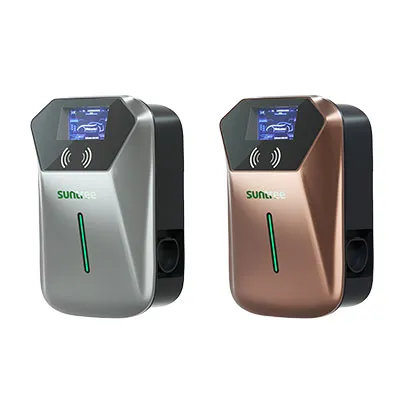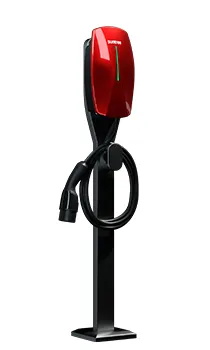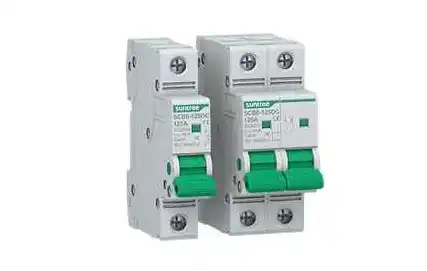DC Circuit Breaker: Key Considerations for Customers When Making a Purchase
In the realm of electrical systems, the DC circuit breaker plays a crucial role in ensuring the safety and reliable operation of DC circuits. When customers are in the market for a DC circuit breaker, several important points demand their attention to make an informed and suitable choice.
1. Rated Voltage and Current
* Rated Voltage: The rated voltage of the DC circuit breaker must match the voltage level of the DC circuit it will be installed in. If the breaker's rated voltage is lower than the circuit voltage, it may not be able to handle the electrical stress, leading to premature failure or even a potential safety hazard. On the other hand, a breaker with a much higher rated voltage than necessary might be overkill and could result in increased cost without providing additional practical benefits. For example, in a 48V DC solar power system, a circuit breaker with a rated voltage appropriate for that level, such as 50V or 60V, would be suitable to ensure proper operation and protection.
* Rated Current: Determining the correct rated current is equally vital. The breaker should be able to carry the normal operating current of the circuit without overheating or causing unnecessary power losses. It should also be able to interrupt any overcurrent conditions safely. Customers need to accurately assess the maximum current that the circuit is likely to carry, taking into account factors such as the load requirements of connected devices and any possible current surges during startup or abnormal operating conditions. A breaker with a rated current that is too low will trip frequently, disrupting the operation of the system, while one with a much higher rated current may not provide adequate protection in the event of a real overcurrent situation.
2. Interrupting Capacity
The interrupting capacity of a DC circuit breaker is a measure of its ability to safely interrupt short-circuit currents. This is a critical parameter as DC circuits can experience high short-circuit currents due to factors like capacitor discharges or cable faults. Customers must ensure that the breaker they choose has an interrupting capacity sufficient to handle the maximum possible short-circuit current in their particular application. If the breaker's interrupting capacity is insufficient, it may not be able to safely clear the fault, leading to severe damage to the circuit and associated equipment, and potentially posing a safety risk to personnel. For instance, in an industrial DC motor drive system, where large currents may flow during a short-circuit event, a circuit breaker with a high interrupting capacity, such as 10kA or more, may be required to ensure reliable protection.
3. Operating Mechanism
1. Manual vs. Automatic: DC circuit breakers are available with both manual and automatic operating mechanisms. Manual breakers require human intervention to open or close the circuit, which can be suitable for applications where direct control is desired or where the frequency of operations is relatively low. Automatic breakers, on the other hand, can detect abnormal conditions such as overcurrent or short-circuit and trip automatically to protect the circuit. They are often preferred in applications where rapid and reliable protection is essential, such as in data centers or critical power supply systems. Customers need to consider the operational requirements of their specific application and choose the appropriate operating mechanism accordingly.
2. Trip Characteristics: The trip characteristics of a circuit breaker define how it responds to different levels of overcurrent. Some breakers have adjustable trip settings, allowing customers to customize the breaker's response to fit the specific needs of their circuit. For example, a breaker may be set to trip quickly for severe overcurrents to provide immediate protection, while for milder overcurrents, it may have a delayed trip to avoid unnecessary disruptions. Understanding the trip characteristics and being able to select the appropriate settings is crucial for ensuring optimal protection and reliable operation of the DC circuit.
4. Environmental Conditions
- Temperature Range: The operating environment's temperature can significantly affect the performance and reliability of a DC circuit breaker. Customers need to consider the temperature range in which the breaker will be installed. If the environment is subject to extreme temperatures, either high or low, a breaker that is rated to operate within that temperature range must be selected. For example, in outdoor solar installations where temperatures can vary widely throughout the day and season, a circuit breaker with a wide operating temperature range, such as -25°C to +70°C, is essential to ensure proper functioning and long-term durability.
- Humidity and Corrosive Agents: In some environments, humidity and the presence of corrosive agents can also be a concern. High humidity levels can lead to condensation on the breaker's components, potentially causing electrical leakage or corrosion. If the installation site is in a coastal area or an industrial environment with exposure to chemicals or corrosive gases, a circuit breaker with appropriate 防护 measures such as a sealed enclosure or corrosion-resistant materials should be chosen to prevent premature degradation and ensure reliable operation.
5. Brand and Quality
- Reputation and Track Record: The brand and quality of the DC circuit breaker are important factors to consider. Well-known and reputable brands with a proven track record in manufacturing reliable electrical equipment are more likely to produce high-quality circuit breakers that meet industry standards and perform consistently over time. One such brand is SUNTREE. Their line of DC circuit breakers is a cost-effective and high-quality solution for your needs. With a qualified team of experts backed by 16 years of industry experience, SUNTREE understands what the market needs and manufactures modular circuit breakers based on your specifications.
- Certifications and Standards: Checking for relevant certifications and compliance with industry standards is also crucial. Certifications such as UL, CE, or IEC indicate that the product has been tested and meets specific safety and performance requirements. SUNTREE's circuit breakers adhere to these recognized standards, ensuring that they have undergone proper quality control and are suitable for use in a wide range of applications. Customers can have confidence in the quality and safety of SUNTREE's products.
6. Cost and Lifecycle Cost
1. Initial Purchase Cost: While cost is always a consideration, it should not be the sole determining factor when choosing a DC circuit breaker. Customers need to balance the initial purchase cost with the other important features and qualities of the breaker. A cheaper breaker may seem attractive initially, but if it lacks the necessary performance, reliability, or features, it could lead to higher maintenance costs and potential downtime in the long run.
2. Lifecycle Cost: Considering the lifecycle cost of the circuit breaker is essential. This includes factors such as maintenance requirements, expected lifespan, and the cost of replacement parts. SUNTREE's DC circuit breakers offer an excellent balance in terms of cost and performance. Their certified facility houses many automated production lines, churning out 200,000+ pieces annually, which allows for efficient production and cost savings. This, in turn, translates to better wholesale prices that are competitive in the market. Customers can place their bulk order today and take advantage of SUNTREE's amazing wholesale prices, getting a high-quality product at a great value. So, if you're looking for a reliable DC circuit breaker, click here to learn more about SUNTREE's offerings and make an informed decision for your electrical system protection needs.
In conclusion
When purchasing a DC circuit breaker, customers need to carefully consider various factors such as rated voltage and current, interrupting capacity, operating mechanism, environmental conditions, brand and quality, and cost. By taking these points into account and making an informed choice, they can ensure the reliable operation and protection of their DC circuits, minimizing the risk of failures and ensuring the smooth functioning of their electrical systems. Whether it's for a renewable energy installation, an industrial application, or a data center, a well-chosen DC circuit breaker is a crucial investment in the safety and performance of the electrical infrastructure, and SUNTREE's line of DC circuit breakers could be the perfect solution for you.









